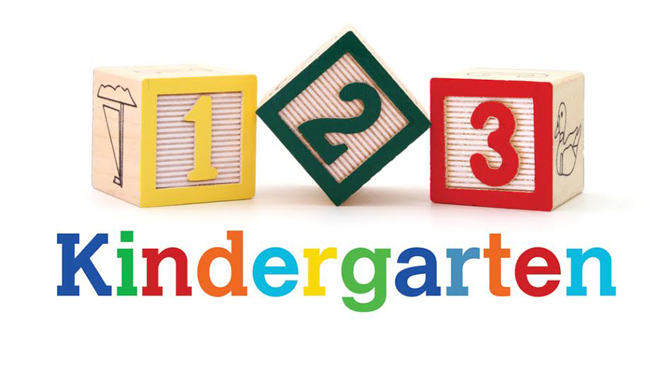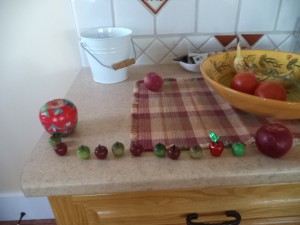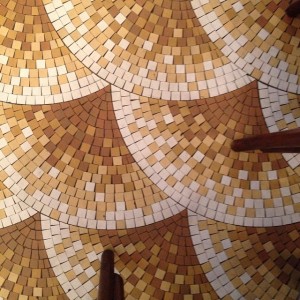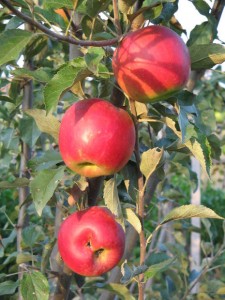Who knew a dollar store package of googly eyes could be used for some much Halloween fun and learning? Today, we used the eyes for some Monster Math.
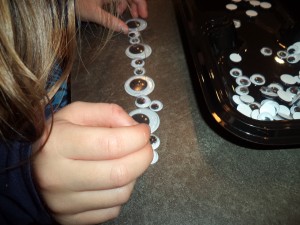 Because the googly eyes were different sizes, the first thing we did was sort them into groups. Little Sister helped make 2 groups, one group of ‘weally’ big eyes and one group of smaller ones.
Because the googly eyes were different sizes, the first thing we did was sort them into groups. Little Sister helped make 2 groups, one group of ‘weally’ big eyes and one group of smaller ones.
Big Sister noticed that the small eyes were two similar sizes, but some were a little big bigger, so she made 3 groups. She used them to make a pattern of very small, just small, and really big.
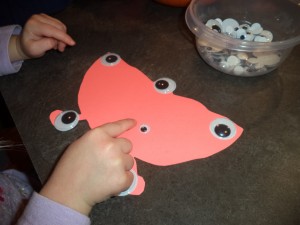 After they had sorted and played, I gave them some monster shapes cut out of bright paper and let them put eyes on the monster. For both kids, we practiced some counting. Little Sister wanted the big googly eyes with one little eye to be the baby.
After they had sorted and played, I gave them some monster shapes cut out of bright paper and let them put eyes on the monster. For both kids, we practiced some counting. Little Sister wanted the big googly eyes with one little eye to be the baby.
While Little Sister had a nap, Big Sister and I played a game. Using a monster each as our playing board, we would shake a dice. Whatever number the dice showed, we would put that many eyes on our monster. This was both a counting and a matching activity. If there were 4 dots on the dice, we had to put 4 eyes on the monster.
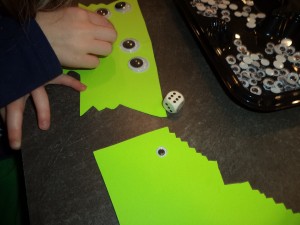 We take for granted that the number 1 is 1 item but kids have to make this connection from their experiences. When our monsters had too many eyes, we played again, but this time we could only get one of the big googly eyes if we shook 1 on the dice. Now, the single dot was the best shake instead of the lowest one.
We take for granted that the number 1 is 1 item but kids have to make this connection from their experiences. When our monsters had too many eyes, we played again, but this time we could only get one of the big googly eyes if we shook 1 on the dice. Now, the single dot was the best shake instead of the lowest one.
Sorting, patterns, counting, matching and more made for a number of monster math activities. Any math monsters at your house?
